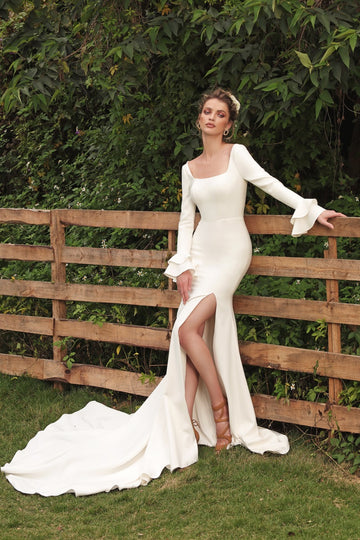Exploring Non-Traditional Wedding Formats and Attire: Embracing Change in Love Celebrations
Exploring Non-Traditional Wedding Formats and Attire: Embracing Change in Love Celebrations
Weddings have long been celebrated as one of life’s most significant milestones, a day where love and commitment are formalized in the presence of family and friends. However, as society evolves, so too do the styles and formats of weddings. Non-traditional wedding formats and attire are gaining popularity as couples seek ways to express their individuality and uniqueness. In this article, we will delve into the various non-traditional wedding formats, explore unique attire options, and discuss why these contemporary shifts are reshaping the wedding landscape.
Understanding Non-Traditional Wedding Formats
Gone are the days when weddings strictly adhered to a conventional format. Today, couples are opting for creative and personalized ceremonies that reflect their love stories. Below are some of the most popular non-traditional wedding formats:
| Wedding Format | Description |
|---|---|
| Destination Weddings | Weddings held in a location away from the couple's hometown, often in picturesque settings such as beaches, castles, or exotic locales. |
| Elopements | Intimate weddings where couples choose to marry privately, often with just a few witnesses, sometimes even without any guests. |
| Micro Weddings | A smaller version of traditional weddings, typically involving a limited guest list, focusing on intimacy and personal connections. |
| Virtual Weddings | Weddings conducted online, allowing guests from around the world to join the celebration via video conference. |
| Theme Weddings | Weddings that revolve around a specific theme, allowing couples to express their interests, hobbies, or favorite movies through the ceremony and reception decor. |
The Allure of Non-Traditional Wedding Attire
Accompanying the shift towards non-traditional weddings is the evolution of wedding attire. Couples are increasingly moving away from the classic white dress and tuxedo, embracing styles that reflect their personalities. Here are some examples of innovative wedding attire:
For Brides:
- Colored Dresses: While white has been the traditional choice, many brides are now choosing vibrant colors like red, blue, or even floral patterns to showcase their unique style.
- Jumpsuits: A fashionable and practical alternative to dresses, jumpsuits offer ease and comfort while maintaining a chic appearance.
- Two-Piece Outfits: Combining tops and skirts or pants allows brides to mix and match styles, offering a personalized touch.
For Grooms:
- Casual Attire: Some grooms are opting for relaxed outfits like chinos and button-up shirts, especially in outdoor or beach settings.
- Colored Suits: Bold colors such as burgundy or navy are becoming more acceptable instead of the traditional black tuxedo.
- Novelty Accessories: Grooms can express their personalities through unique ties, socks, or quirky footwear that add flair to their ensemble.

Integrating Cultural Elements
Many couples are embracing their cultural backgrounds in their wedding formats and attire. This integration often leads to beautiful ceremonies that celebrate heritage. Non-traditional formats like themed weddings allow for the incorporation of cultural and traditional elements without being restricted by conventional expectations.
Examples of Cultural Integration:
- Fusion Weddings: Combining elements from two different cultures can result in a rich, diverse celebration that honors both backgrounds.
- Cultural Attire: Brides and grooms may choose to wear traditional garments from their cultures, showcasing unique designs and textiles.
- Rituals and Ceremonies: Incorporating traditional customs in a new format, such as an outdoor setting or modernized ritual practices, can create a personal touch.
The Impact of Society on Wedding Trends
The rise of non-traditional weddings can be attributed to several societal factors. Here’s an overview of how changing attitudes influence wedding trends:
Individualism and Self-Expression
In today’s world, individualism is celebrated, and couples are encouraged to showcase their personality through their weddings. This emphasis on self-expression is leading to the popularity of non-traditional formats and attire.
Cost Considerations
Traditional weddings can be expensive, prompting couples to look for budget-friendly alternatives. Formats like elopements or micro-weddings allow couples to reduce costs while keeping the essence of their celebration intact.
Technology and Virtual Options
The advancement of technology has made virtual weddings more feasible and convenient. Couples can connect with guests globally, making it easier to share their special day with loved ones despite distance.
Addressing Common Concerns
While non-traditional weddings offer various benefits, couples often have concerns about straying from tradition. Below are some common questions couples might ask:
Will my family disapprove?
Family dynamics can be a concern, especially if parents have strong expectations about traditional wedding formats. Open communication with family about your desire for a non-traditional wedding can help alleviate such concerns.
How do I plan a unique wedding?
Planning a non-traditional wedding requires creativity and careful thought. Consider your interests, preferences, and values as a couple, and use these as inspiration for your wedding format and attire. Hiring a wedding planner experienced in non-traditional formats can also help streamline the process.
What if I want to include traditional elements?
Incorporating traditional elements into a non-traditional wedding can be a beautiful compromise. You might include certain rituals or customs within a modern framework. This blend can effectively honor tradition while allowing for personal expression.
Conclusion and Recommendations
The shift towards non-traditional wedding formats and attire reflects a broader cultural shift towards individualism and personalization. Couples today have the freedom to craft unique celebrations that faithfully represent their love stories, interests, and backgrounds. If you are planning a non-traditional wedding, consider your options carefully, communicate openly with families, and most importantly, stay true to yourselves. The most important aspect of any wedding is the love celebrated between partners. Choose the format and attire that resonate with your hearts, and you will create an unforgettable experience.
As you embark on this journey, remember to take your time, embrace creativity, and enjoy every moment of the planning process. Happy planning!
